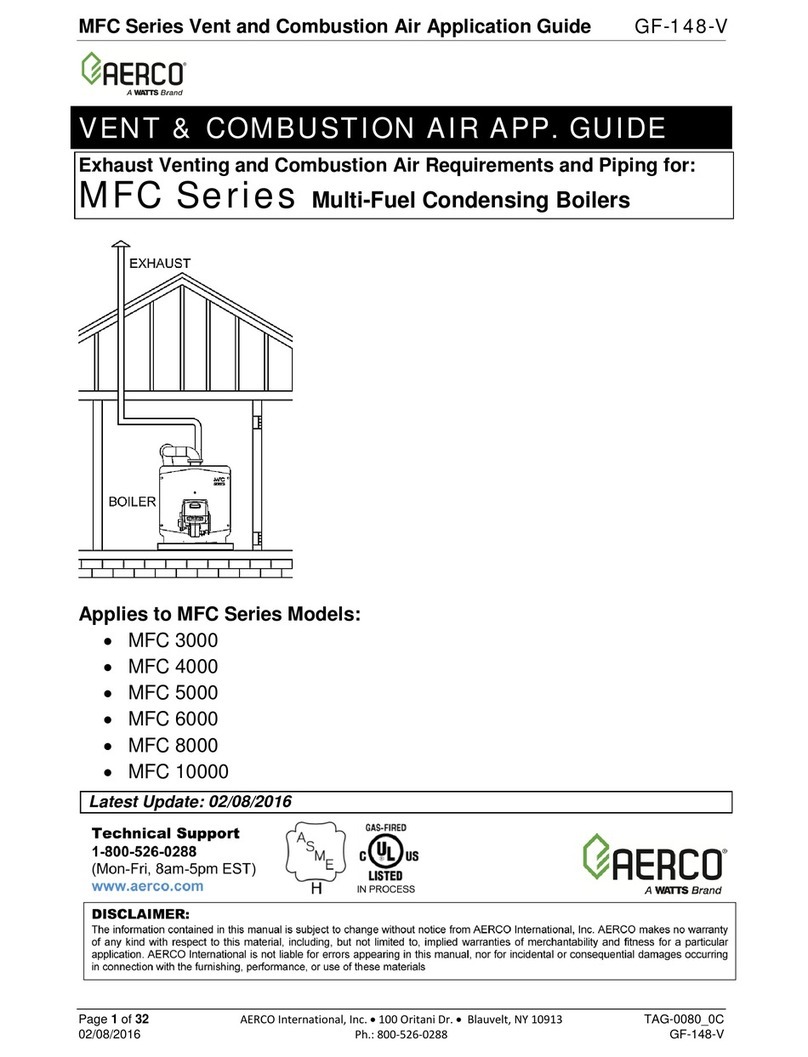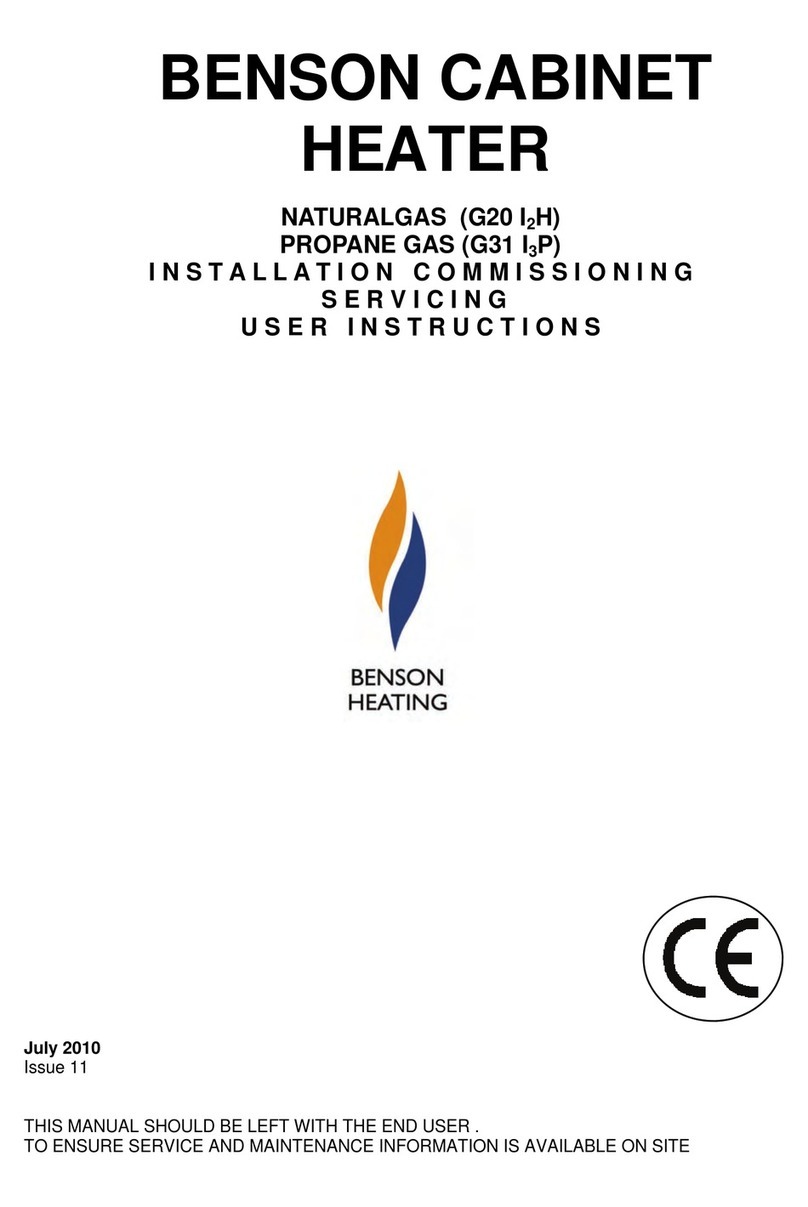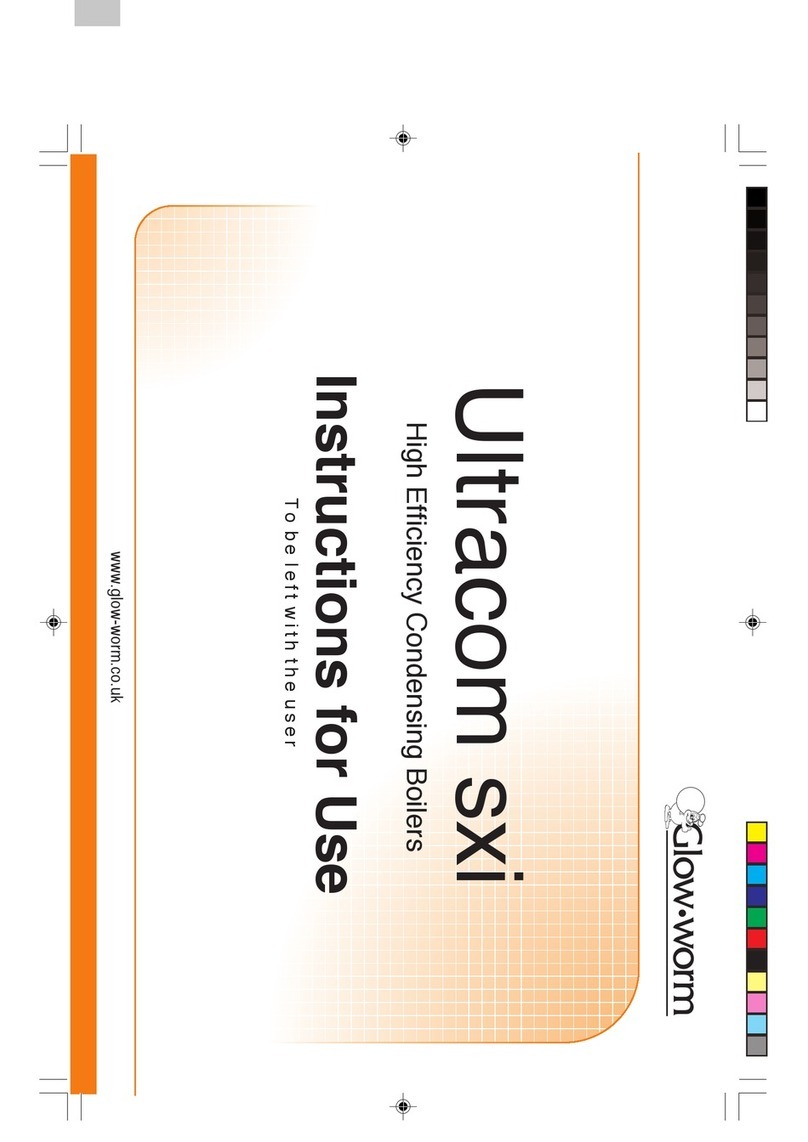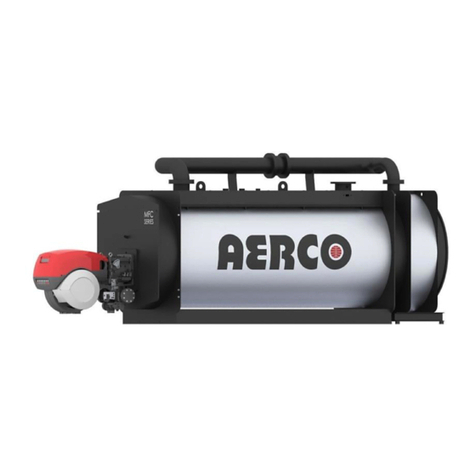Detandt-Simon BAMEMA150-D Specification sheet

1
www.detandt.com
Capacité
(L)
Poids
net
A
B
C
D
E
F
G
H
150
44
935
550
140
350
180
350
285
130
Manuel d’installation et d’utilisation
Installatie en gebruiksaanwijzing
Operation and Installation Manual
BAMEMA150-D
CHAUFFE-EAU ÉLECTRIQUE MURAL ÉMAILLÉ 150L
GEËMAILLEERD ELEKTRISCH MURAAL BOILER 150L
ELECTRICAL WALL-MOUNTED ENEMALED BOILER 150L

2
www.detandt.com
INSTRUCTIONS GENERALES
Lire avec attention les instructions suivantes pour la meilleure utilisation du produit.
L’installation est à la charge de l’acheteur. Le producteur ne répond pas des dommages causés par une
mauvaise installation et par le non respect des instructions se trouvant dans cette notice. En
particulier, il faut que :
1.
lebranchement électrique soit conforme aux indications figurant auparagraphe correspondant.
2.
la soupape de sécurité fournie avec l’appareil soit vissée modérément, sans forcer.
3.
l’installation soit effectuée par du personnel qualifié.
Cet appareil est conforme aux prescriptions en vigueur relatives aux directives Européennes (CE)
Le dispositif peut être utilisé par des enfants âgés plus de 8 ans et depuis les gens avec réduit
capacités physiques, sensorielles ou mentales, ou le manque d’expérience ou nécessaire
connaissance, fournis sous surveillance ou après les même sont reçu instruction concernant
l’utilisation sécuritaire des appareil et la compréhension des dangers qui lui sont inhérents. Le
nettoyage etl’entretiendestinéeàêtreexécutéepar l’utilisateur nedoivent pas être effectués par des
enfants sanssurveillance.
Les enfants doivent être surveillés pour éviter qu’ils puissent jouer avec l’appareil.
Si le câble d’alimentation est endommagé, il doit être remplacé par le fabricant, son service après
vente ou des personnes de qualification similaire afin d’éviter un danger. Le dispositif limiteur de
pression doit être mis en fonctionnement régulièrement afin de retirer les dépôts de tartre et de
vérifier qu’il n’est pas bloqué.
1.
NORMES D’INSTALLATION
(uniquement par du personnel qualifié)
La gamme de chauffe-eau comprend des modèles conçus pour un montage vertical ou horizontal
(fig.1).
1.1
Fixation murale
Fixer, au mur à l’aide de vis et de chevilles appropriées, la bride de fixation murale fournie avec
l’appareil. Accrocher le chauffe-eau à la bride et tirer vers le bas pour garantir sa bonne fixation.
1.2
Branchement hydraulique
Entrée de l’Eau froide identifiée par une bague de couleur bleue.
Sortie de l’eau chaude identifiée par une bague de couleur
rouge.
Une soupape de sureté tarée à 0,8 MPa (8 bars) est fournie avec l’appareil (fig.3).
Vissez le tuyau d’arrivée, caractérisé par un collier de bleu, un raccord en “T”; vis, puis, d’une part un
coq pour la vidange ne peut fonctionner avec un outil à partir de «l’autre soupape de sécurité
..
Eviter de serrer trop fort la soupape de sureté en n de course an de ne pas l’endommager.
Raccorder cette dernière au tuyau de l’eau froide du réseau au moyen d’un tuyau flexible.
WARNING : l’installation d’un groupe de sécurité hydraulique (non fourni par nos soins),
conformes aux normes EN 1487 ou équivalentes en vigueur, est obligatoire. Il doit comprendre les
éléments suivants : robinet d’interception ; soupape de retenue ; dispositif de commande de la
soupape de retenue ; soupape de sécurité ; dispositif d’interruption du chargement hydraulique.

3
www.detandt.com
La pression de tarage du groupe de sécurité hydraulique doit être de 0,7 MPa (7bar). (Fig. 2-C)
Prévoir un réducteur de pression (Fig. 2-A) en amont du groupe de sécurité lorsque la pression de
service du réseau d’alimentation est supérieure à 0,4 MPa (4 bars), le plus loin possible de l’appareil.
Si la distance entre le réducteur de pression et l’appareil est inférieur à 10 mètres, il faut prévoir un
vase d’expansion (fig. 2-B) proche du tuyau de l’eau froide.
Un léger écoulement pendant la phase de chauffage est tout à fait normal ; c’est pourquoi, nous
conseil
lons de raccorder l’orifice de la soupape de sureté à un tube de drainage installé en pente
continue vers le bas, dans un endroit protégé par le gel et laissé libre à l’atmosphère.
Raccorder la sortie
du chauffe-eau (identifié par une bague de couleur rouge) à l’aide de tubes flexibles résistant à la
pression de fonctionnement mais aussi à la température de l’eau chaude qui peut couramment atteindre
et dépasser 80°C.
1.3
Branchement électrique
Si l’appareil n’est pas fourni de câble d’alimentation, il faut effectuer le branchement au réseau fixe,
soit au moyen de tube rigide, soit avec câble pour branchement xe. Avant la mise en marche,
contrôler que la tension du réseau soit conforme à la tension indiquée sur la plaque signalétique.
Dans le circuit d’alimentation électrique du chauffe-eau doit être monté un dispositif qui assure
l’interruption de tous les pôles dans les conditions de la catégorie de surtension III.
La légende du schéma électrique est rapportée ci-dessous :
R = résistance électrique S1, S2 = contacts thermostats
TS = dispositif de sécurité du thermostat TR = contact activé
L-N = ligne d’alimentation SP = témoin lumineux
L1, L2 = bornes de raccord à la ligne électrique = mise à la terre
La connexion électrique doit être directement effectuée aux bornes (Fig.4-5 L/N) du thermostat.
Pour débrancher l’appareil du réseau, utiliser un interrupteur bipolaire conforme aux Normes CEI-EN
(ouverture contacts au moins 3mm, mieux si pourvu de fusibles). La mise à la terre de l’appareil est
obligatoire et le câble de terre (de couleur jaune-vert et de longueur supérieur aux phases) doit être
fixé à la borne marquée du symbole
2.
MISE ENMARCHEETESSAI
NE JAMAIS BRANCHER L’APPAREIL S’IL N’EST PAS REMPLI D’EAU.
Ouvrir le robinet central de l’installation et celui de l’eau chaude jusqu’à la sortie de tout l’air du
chauffe- eau et jusqu’à écoulement de l’eau. Ensuite fermer le robinet d’eau.
3.
NORMES D’USAGE (utilisateur)
•
suivre attentivement les instructions générales et les règlements de sécurité figurant dans le début du
texte, à la suite obligatoire comme indiqué.
3.1
Recommandation
Évitez de placer un objet sous le chauffe-eau et / ou de l’appareil qui pourrait être endommagé par
une éventuelle perte d’eau.
•
En cas d’inutilisation prolongée de l’eau est nécessaire:
-DISCONNECT l’alimentation de l’appareil portant le commutateur externe en position «OFF».
-Fermer les vannes d’eau.
•
l’eau chaude avec une température supérieure à 50 ° C qui sort des robinets d’utilisation peut
provoquer immédiatement brûlures de la série ou la mort par brûlures. Les enfants handicapés et
les personnes âgées sont plus de risque

4
www.detandt.com
3.2
Misesoustension
Tourner l’interrupteur bipolaire installé au mur dans la position « ON ».
3.3 Réglage de la température
Pour les modèles munis d’un réglage extérieur, celui-ci s’effectue en tournant la molette dans le sens
ho- raire pour l’augmenter et dans le sens antihoraire pour la diminuer. On conseille de régler la
température au dessous de la position maximum. Cette position permet un rendement optimal de
l’appareil avec une sensible économie d’énergie et une fiabilité meilleure. La T°C est préréglée d’usine à
65°C +/- 5°C.
Dans le but de prévenir la formation de la « légionelle » il est recommandé de sélectionner une
température proche de celle réglée en usine (vers le repère +)
4.
NORMESD’ENTRETIEN(uniquementpardupersonnelqualifié)
Toutes les interventions et les opérations d’entretien doivent être effectuées par du personnel qualifié.
Avant d’effectuer toute intervention d’entretien, débrancher l’appareil du réseau électrique.
Pour accéder aux parties électriques, il faut enlever la calotte et les vis qui la fixent.
4.1
Entretiens périodiques
Pour obtenir le bon rendement de l’appareil, il faut procéder au détartrage de la résistance chaque
année. L’opération peut être effectuée en effritant le tartre tout en faisant attention de ne pas
détériorer la rési- stance. Pour enlever la résistance, il faut vidanger le chauffe-eau.
L’anode de magnésium doit être remplacée tous les 2 ans (conformément aux conditions de la
garantie).
Pour l’enlever, il y a lieu, au préalable, de démonter la résistance et de dévisser l’anode de l’étrier de
sup- port.
4.2
Vidange du chauffe-eau
Pour vidanger le chauffe-eau :
1.
Couper l’alimentation électrique.
2.
Fermer la vanne d’arrêt d’eaufroide.
3.
Ouvrir les robinets d’eau chaude de l’installation.
4.
Ouvrir le robinet pour la vidange du chauffe-eau. Si le robinet n’a pas été installé, enlever la soupape
de sureté.
4.3
Limiteurdesécurité
En cas de chauffage anormal de l’eau, un interrupteur thermique de sécurité, conforme aux normes EN,
interrompt le circuit électrique sur les deux phases d’alimentation à la résistance. Dans ce cas, la
restauration de cet interrupteur est requis (fig. 4-S/5-S) ou, l’intervention du personnel qualifié peut
être demandée. La restauration est manuelle.
5.
INFORMATIONS UTILES
-Si l’eau chaude ne sort pas des robinets de puisage, avant de demander l’intervention du SAV,
contrôler que les branchements hydrauliques et électriques ont bien été effectués, comme indiqué
dans les para- graphes précédents, ou contrôler sur le thermostat, après l’avoir démonté, la continuité
des contacts sur les bornes et les connexions « faston ».
-
Dans la négative, on peut supposer que la sécurité bipolaire est déclenchée.
-Si la lampe témoin ne s’allume pas, même si l’appareil débite de l’eau chaude, il se peut que la lampe
seule soit défectueuse. Dans ce cas, cette dernière peut être remplacée.

5
www.detandt.com
ALGEMENE INSTRUCTIES
Lees aandachtig de volgende instructies voor het beste gebruik van het product.
De installatie moet worden uitgevoerd door de koper. De producent is niet verantwoordelijk voor
schade veroorzaakt door een slechte installatie en door het niet naleven van de instructies in deze
handleiding. In het bijzonder:
4.
moet elektrische aansluiting conform zijn aan de indicaties in de overeenkomstige paragraaf;
5.
moet de veiligheidsklep die bij het toestel is geleverd matig worden vastgeschroefd, zonder te
forceren;
6.
moet de installatie worden uitgevoerd door gekwalificeerd personeel.
Dit toestel is conform aan de geldende voorschriften van de Europese richtlijnen (CE).
Het toestel kan worden gebruikt door kinderen ouder dan 8 jaar en door personen met
lichamelijke, zintuiglijke of verstandelijke beperkingen, gebrek aan ervaring of nodige kennis, op
voorwaarde dat dit gebeurt onder toezicht of nadat deze personen instructies hebben gekregen
over het veilige gebruik van het toestel en dat ze de gevaren begrijpen die hiermee gepaard gaan.
De reiniging en het onderhoud moeten worden uitgevoerd door de gebruiker maar niet door
kinderen zonder toezicht.
Kinderen mogen het toestel alleen gebruiken onder toezicht om te voorkomen dat ze ermee spelen.
Wanneer de voedingskabel beschadigd is, moet deze door de fabrikant, de dienst na verkoop of door
personen met gelijkaardige kwalificaties worden vervangen om gevaar te vermijden. De drukbegrenzer
moet regelmatig worden ingeschakeld om deposito’s van tandsteen te verwijderen en om na te gaan
of het toestel niet is geblokkeerd.
6.
INSTALLATIENORMEN
(alleen door gekwalificeerd personeel)
Het gamma boilers bevat modellen die zowel zijn ontworpen voor een verticale of horizontale
montage (afb. 1).
6.1
Muurbevestiging
Aan de muur bevestigen met behulp van geschikte schroeven en pluggen en de bevestigingsbeugel die
bij het toestel geleverd is. Bevestig de boiler op de beugel en trek naar onder om een goede bevestiging
te garanderen.
6.2
Hydraulische aansluiting
De invoer voor koud water wordt aangeduid met een blauwe ring.
De uitvoer voor warm water wordt aangeduid met een rode ring.
Een veiligheidsklep getarreerd op 0,8 MPa (8 bar) wordt met het toestel geleverd (afb. 3).
Schroef de aanvoerslang vast, gekenmerkt door een blauwe ring, een “T”-aansluiting; schroef
vervolgens aan een kant een blindstop omdat de lediging niet kan worden uitgevoerd met een
tool , vanaf “de andere veiligheidsklep”
Schroef de veiligheidsklep niet te stevig vast zodat deze niet wordt beschadigd. Sluit deze
klep met behulp van een flexibele slang aan op de leiding voor koud water van het
waternet.
WAARSCHUWING: De installatie van een hydraulische veiligheidsgroep (door ons geleverd),
conform de normen EN 1487 of gelijkaardige geldende normen, is verplicht. De installatie moet de

6
www.detandt.com
volgende elementen bevatten: kraan voor watertoevoer, terugslagklep, inrichting om de terugslagklep
te bedienen, veiligheidsklep, inrichting voor de onderbreking van de hydraulische lading. De ingestelde
druk van de hydraulische beveiligingsgroep moet 0,7 Mpa (7 bar) bedragen. (Afb. 2-C)
Voorzie een drukbegrenzer (Afb. 2-A) vóór de beveiligingsgroep wanneer de werkdruk van het
voedingsnet hoger is dan 0,4 MPa (4 bar), zo ver mogelijk van het toestel. Als de afstand tussen de
drukbegrenzer en het toestel minder dan 10 meter bedraagt, moet er een expansievat worden
voorzien (afb. 2-B) in de buurt van de leiding voor koud water.
Een lichte afvloeiing tijdens de verwarmingsfase is volstrekt normaal; daarom raden we aan om
de
opening van de veiligheidsklep aan te sluiten op een afvoerbuis die naar beneden helt naar de
onderkant, in een ruimte die beschermd is tegen vorst en met een vrije atmosfeer.
Sluit de uitlaat van de boiler (geïdentificeerd door een rode ring) aan met behulp van flexibele slangen
die bestand zijn tegen de werkdruk maar ook tegen de temperatuur van het warm water dat warmer
dan 80 % kan worden.
6.3
Elektrische aansluiting
Als het toestel niet wordt geleverd met een voedingskabel, moet het toestel worden aangesloten op
het vast netwerk, ofwel met een stijve buis ofwel met een kabel voor vaste aansluiting. Voor de
inbedrijfstelling controleert u of de spanning van het netwerk conform is aan de spanning die is
aangeduid op het typeplaatje.
In het elektrisch voedingscircuit van de boiler moet ook een inrichting worden gemonteerd die de
onderbreking van alle polen verzekert onder de omstandigheden van overspanningscategorie III.
De legenda van het elektriciteitsschema is hieronder vermeld:
R = elektrische weerstand S1, S2 = thermostatische contacten
TS = beveiligingsinrichting van de thermostaat TR = geactiveerd contact
L-N = toevoerleiding
SP = lampje
L1, L2 = aansluitklemmen op de elektrische leiding = aarding
De elektrische verbinding moet rechtstreeks worden uitgevoerd op de klemmen (afb. 4-5 L/N) van de
thermostaat.
Om het netwerkapparaat aan te sluiten gebruikt u een bipolaire schakelaar die conform is aan de
normen CEI-EN (opening van contacten op minder dan 3 mm, beter als ze zekeringen voorzien zijn). De
aarding van het apparaat is verplicht en de aardingskabel (met geel-groene kleur en met een lengte die
langer is dan de fasen) moet worden bevestigd aan de klem met het symbool .
7.
INBEDRIJFSTELLING EN TEST
SCHAKEL HET TOESTEL NOOIT IN ALS HET NIET MET WATER IS GEVULD.
Open de centrale kraan van de installatie en die van het warm water tot alle lucht uit de boiler is en het
water begint te lopen. Sluit vervolgens het kraantje.
8.
GEBRUIKSNORMEN (gebruiker)
•
Volg aandachtig de algemene instructies en de verplichte veiligheidsreglementen zoals aangegeven in
het begin van de tekst.
8.1
Aanbeveling
Plaats geen voorwerpen onder de boiler en/of het toestel die zouden kunnen worden beschadigd
door eventueel waterverlies.

7
www.detandt.com
•
Wanneer het water voor lange duur niet wordt gebruikt, is het noodzakelijk om:
- de voeding van het apparaat met de externe schakelaar in positie “UIT” ONTKOPPELEN.
- de waterkleppen sluiten.
•
Warm water met een temperatuur hoger dan 50 °C dat uit de kraantjes komt voor gebruik kan leiden
tot onmiddellijke brandwonden of dood door verbrandingen.
Gehandicapte kinderen en oudere
personen worden meer blootgesteld aan de risico’s van verbranding
8.2
Onder spanning
Draai de bipolaire schakelaar die op de muur is geïnstalleerd in de positie “AAN”.
8.3 De temperatuur instellen
Bij de modellen die zijn uitgerust met een externe regelaar gebeurt dit door het wieltje met de wijzers
van de klok mee te draaien om de temperatuur te verhogen en tegen de wijzers van de klok in om de
temperatuur te verminderen. We raden aan om de temperatuur onder het maximum in te stellen.
Deze positie zorgt voor een optimaal rendement van het toestel met een aanzienlijke energiebesparing
en een betere betrouwbaarheid. De t°C wordt in de fabriek ingesteld op 65 °C + / - 5 °C.
Om de vorming van “legionella” te vermijden wordt het aanbevolen om een temperatuur te
selecteren die dichtbij de fabrieksinstellingen lift (naar het teken +)
9.
ONDERHOUDSNORMEN (alleen door gekwalificeerd personeel)
Alle interventies en onderhoudswerken moeten worden uitgevoerd door gekwalificeerd personeel.
Alvorens onderhoudswerken uit te voeren koppelt u het toestel los van het elektrisch netwerk.
Om toegang te krijgen tot de elektrische onderdelen moet de kap en de schroeven worden verwijderd.
9.1
Periodiek onderhoud
Om een goed rendement van het toestel te verkrijgen moet de weerstand elk jaar worden ontdaan van
tandsteen. De handeling kan worden uitgevoerd door het tandsteen af te brokkelen en er op te letten
dat de weerstand niet wordt beschadigd. Om de weerstand te verwijderen moet u het water laten
weglopen.
De magnesiumanode moet om de 2 jaar worden vervangen (in overeenstemming met de
garantievoorwaarden).
Om deze te verwijderen moet eerst de weerstand worden verwijderd en moet de anode van de
volledige steun worden losgeschroefd.
9.2
Lediging van de boiler
Om de boiler te ledigen:
5.
schakelt u de elektriciteittoevoer uit;
6.
sluit u de afsluitklep voor koud water;
7.
opent u de kraantjes voor warm water;
8.
opent u het kraantje om de boiler te ledigen. Als het kraantje niet is geïnstalleerd verwijdert u de
beveiligingsklep.
9.3
Beveiligingsbegrenzer
In het geval van een abnormale verwarming van het water onderbreekt een thermische
veiligheidsonderbreker, conform aan de EN-normen, het elektrisch circuit de twee voedingsfasen van
de weerstand. In dit geval is het herstel van deze onderbreker vereist (afb. 4-S/5-S) of kan de
interventie door gekwalificeerd personeel worden gevraagd. Het herstel gebeurt handmatig.

8
www.detandt.com
10.
NUTTIGE INFORMATIE
-Als er geen warm water uit de kraantjes komt controleert u, alvorens een tussenkomst door SAV te
- Vragen, of de hydraulische en elektrische aansluitingen correct zijn uitgevoerd, zoals aangeduid in de
vorige paragrafen, of controleert u op de thermostaat, na deze te hebben gedemonteerd, de
continuïteit van de contacten op de terminals en de “faston”-verbindingen.
-
Als dit alles in orde is, zou het kunnen dat de bipolaire beveiliging is geactiveerd.
-Als het lampje niet oplicht, zelfs niet als het toestel warm water voorziet, kan het zijn dat alleen het
lampje defect is. Het lampje kan dan worden vervangen.

9
www.detandt.com
GENERAL REMARKS
A careful reading is recommended in order to achieve the best performance of the product.
The installation is in charge of the customer, the manufacturer is not responsible for the damages
caused by wrong installation and for not following instructions contained within this manual, in
particular:
•
the electric connection has to be in compliance with the relative paragraph
•
the safety valve supplied with the appliance has not to be tempered with or substituted
•
the installation has to be carried out by qualified professional
The device can be used by children aged over 8 years old and persons with reduced physical,
sensory or mental capabilities, or lack of experience or knowledge required, provided under
supervision or after the same has received instructions relating to ‘ensure safe operation and
understanding of the dangers inherent in it. The cleaning and maintenance intended to be
performed by the user should not be carried out by children without supervision.
The children must be supervised in order to avoid they play with the appliance.
This appliance complies with the provisions of EEC Directives.
1.
INSTALLATIONINSTRUCTIONS (for the installer)
WARNING : Follow the general warnings and the safety norms listed at the beginning of
the text and keep all the instructions given under all circumstances.
The range of the water heaters includes models designed for being fitted IN A VERTICAL
OR
HORIZONTAL POSITION (fig.1).
1.1
Fasten to the wall
The appliance is fixed to a wall via the mounting bracket attached to the unit’s body. Two hook are
used for suspending the appliance. Werecommend touse hooks of suitable dimensions for the type of
wall (not included in the mounting set). Hook the water heater to the bracket and pull it downwards
to make sure ithasbeenfastenedcorrectly.
1.2
Water connection
-Water inlet: marked with blue ring.
-Water outlet: market with red ring.
The appliance is equipped with a safety valve against overpressure adjusted at the value of 0,8 MPa
(8 bar) (fig.3).
Connect inlet tube with blue collar a “T” piece union, hence, connect on one side a tap for draining the
appliance that can only be operated with the use of a tool ; on the other side screw the safety valve .
Don’t force the safety valve otherwise you can damage it. Connect the safety valve to the cold main
tube by flexible pipe.
WARNING: for those nations that have taken on European norm EN1487:2000, the pressure
safety device provided with the product does not comply with national norms.
According to the norm, the device must have a maximum pressure of 0.7MPa (7 bar) and have at least:
a cut-off valve, a control mechanism for the non-return valve, a safety valve and a water pressure shut-

10
www.detandt.com
off device. (fig.2-C)
If the main supplying pressure is close to 0,4MPa (4 bar) is recommended the installation of a pressure
reducer on the outlet of the water meter and in any case as far as much is possible form the water
heater.
A pressure reducer installed close to the appliance (below 10 m) require the installation of an
expansion vessel on the inlet tube of cold water next the appliance.
During the heating phase a slight drip of the safety valve is quite normal due to the increase of
pressure into the boiler. Hence is necessary to connect the drain outlet of the valve ( fig.2) to a drain
pipe installed inclined continuously downward, place without condensation and always open. The
safety valve against overpressure should be operated regularly in order to remove lime scale and
verify the correct operation. Connect the outlet tube of the boiler with red collar to the services by
flexible pipe.
1.3
Electrical connection
If the appliance is not equipped with electrical cable is necessary connect it to the main electrical
supply with rigid cable for fix connection. Before connect the appliance verify that the supply
tension is right with the appliance value.
In the electric power supply circuit of the water heater must be fitted with a device assuring the
interruption of all poles in the conditions of overvoltage category III.
The electrical circuit supplying the appliance must have an in-built device ensuring the
splitting of all terminals poles under conditions of super-voltage category III.
The connection must be done according to the wiring diagram:
R = electricheating element S1, S2 = thermostat contacts
TS = thermostat safety device TR = contact operated
L-N = power supply line SP = indicator light
L1, L2 = electric line connection terminals =earth
To install the power supply wire to the boiler remove the plastic cover and insert the wire in the hole
on the plastic cap.
The electrical connection is carried out directly to the clamps ( Fig. 4-5 L/N ) of the thermostat.
To disconnect the unit form the main electrical supply use a bipolar switch conform to EN-IEC
standards (contact opening at least 3 mm, better if equipped with fuses). The earth connection is
mandatory and the earth cable (must be yellow-green and longer than that of the phases) is fixed to
the terminal marked by symbol .
After the installation, put the plastic cover back in its place.
2.
PUTTING IT INTO SERVICE ANDTESTING
Before connecting the electrical supply, ll the appliance with water. To do this open the main tap of the
plumbing system and then open the hot water tap. Expect the discharge of water form hot water tap
and hold for few seconds in order to permit the discharge of the air inside the pipes. Check carefully for
even- tually leak. Close the hot water tap and switch on the electrical supply.
3.
USER INSTRUCTIONS (by the user)
WARNING. Follow the general warnings and the safety norms listed at the beginning of the text and

11
www.detandt.com
keepall the instructions given under all circumstances.
3.1
Advicefor user
Avoid positioning any objects and/or appliances that could be damaged by water leaks beneath the
water heater.
Should you not use any water for an extended period of time, you should:
•
disconnect the appliance from the electrical supply by switching the external switch“OFF”.
•
turn off the plumbing circuit taps.
•
hot water at above 50°C flowing out of the taps at the point of use could cause serious scalds or even
death from burns. Children, the disabled and the elderly are more exposed to the risk of burns. It is
strictly forbidden for the user to perform any routine or extraordinary maintenance.
3.2
Starting
To turn on the appliance is enough to put into“ON” position the bipolar switch (see electrical
connection)
3.3
Temperature adjustment
Models with external thermal regulation are equipped with an adjustment knob situated onto the plastic
cap.
The customer can adjust, as his preference, the temperature in order to get the best pleasure.
We suggest a regulation below the maximal set in order to achieve the best performance with o good
level of efficiency and good comfort. Models with no thermostat control knobs have automatic water
temperature preset by the Manufacturer 65°C +/- 5°C
4.
MAINTENANCE INSTRUCTION (for competent persons)
WARNING. Follow the general warnings and the safety norms listed at the beginning of the text and
keep all the instructions given under all circumstances.
Before execute any type of operation (maintenance, cleaning,…) switch off the appliance.
All intervention must be performed by qualified personnel only. For operation on thermostat
remove the plastic cap after electrical disconnection. For operation on resistance drain completely
the appliance (see
respective paragraph).
4.1
Periodic maintenance
In order to obtain the best performance from the appliance is advisable to descale the resistance every
year. The operation can be carried out crumbling the limescale from the cover of the resistance. Take
care to not damage it.
The magnesium anode must be substitute every 2 years (see warrantee conditions). In order to remove
it is necessary to remove the resistance. The pressure-relief device is to be operated regularly to
remove lime deposits and to verify that it is not blocked.
4.2
Draining of the appliance
In order to drain the appliance proceed as follow:
1.
Switch off the electrical connection
2.
Turn on the tap of inlet cold water
3.
Turn on the tap of hot water
4.
Turn on the drain tap if equipped during installation, otherwise remove the safety valve for undersink
models is necessary to overturn the appliance.
4.3
Bipolarsafetyreactivation
The appliance is equipped with a thermostat with safety limiting device according to IEC-EN
regulations. In case of abnormal overheating of the water, a thermal safety switch shuts off the

12
www.detandt.com
electrical circuit on both supplying phases of the heating elements; in this cases call the Technical
Assistance to restart the appliance.
Resetting is manual. (fig.4-S/5-S).
5.
USEFUL HINTS
•
If hot water does not come out form the taps, before calling the Technical Assistance make sure that
the water and electrical connections are as specified in the relative paragraphs, or make sure of the
continuity of the phases between the clamps and the relative fastons on the thermostat, after taking it
off. If this is not, the bipolar safety device could have come into operation (call the Technical
Assistance).
•
If the warning lights does not light up, but hot water still comes from the appliance possibly it is only a
faulty bulb. For the replacement of the warning light bulb call the Technical Assistance.

13
www.detandt.com
Table of contents
Languages:
Popular Boiler manuals by other brands
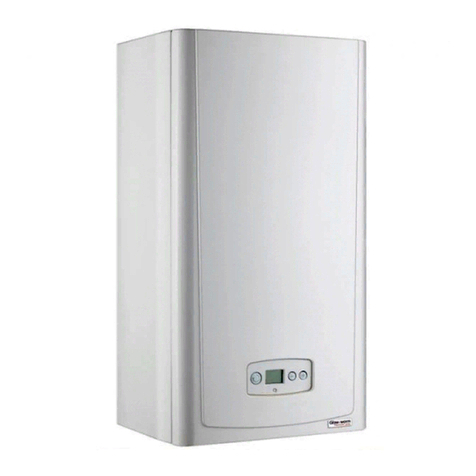
Glowworm
Glowworm 24cx Instructions for use

Thermo Sphere
Thermo Sphere Slimline Installation and operating instructions

Rinnai
Rinnai E75CN Installation & servicing instructions
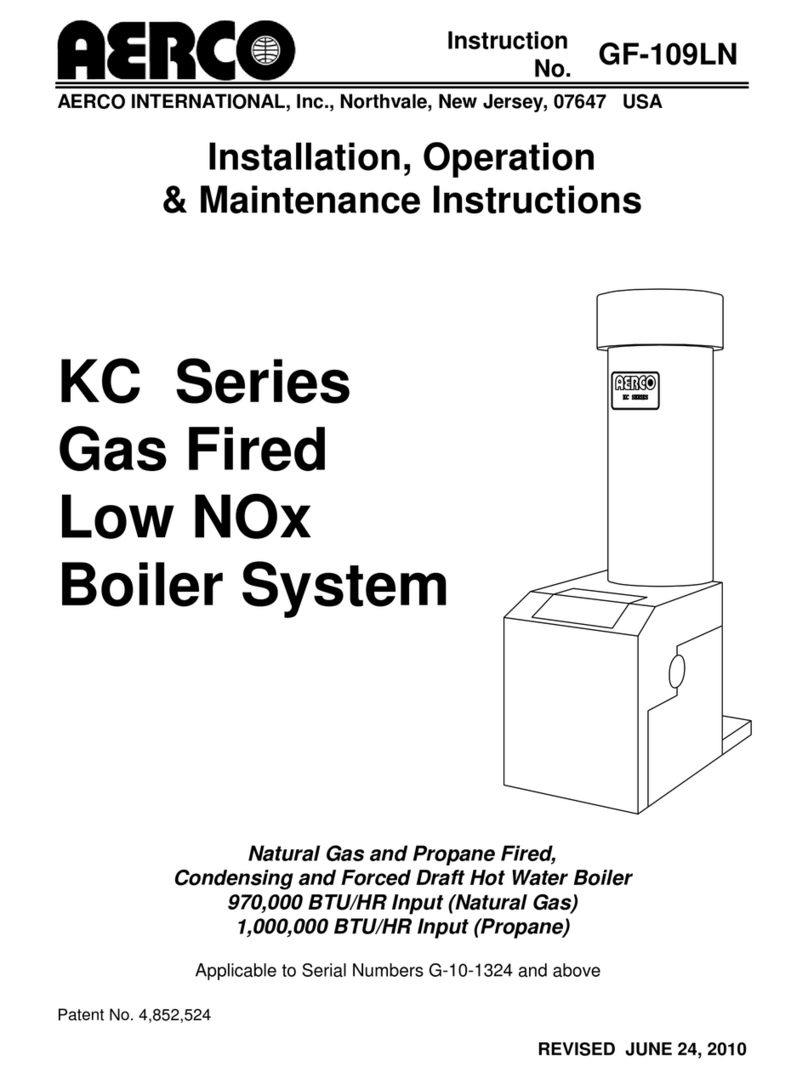
AER
AER KC Series Installation, operation & maintenance instructions
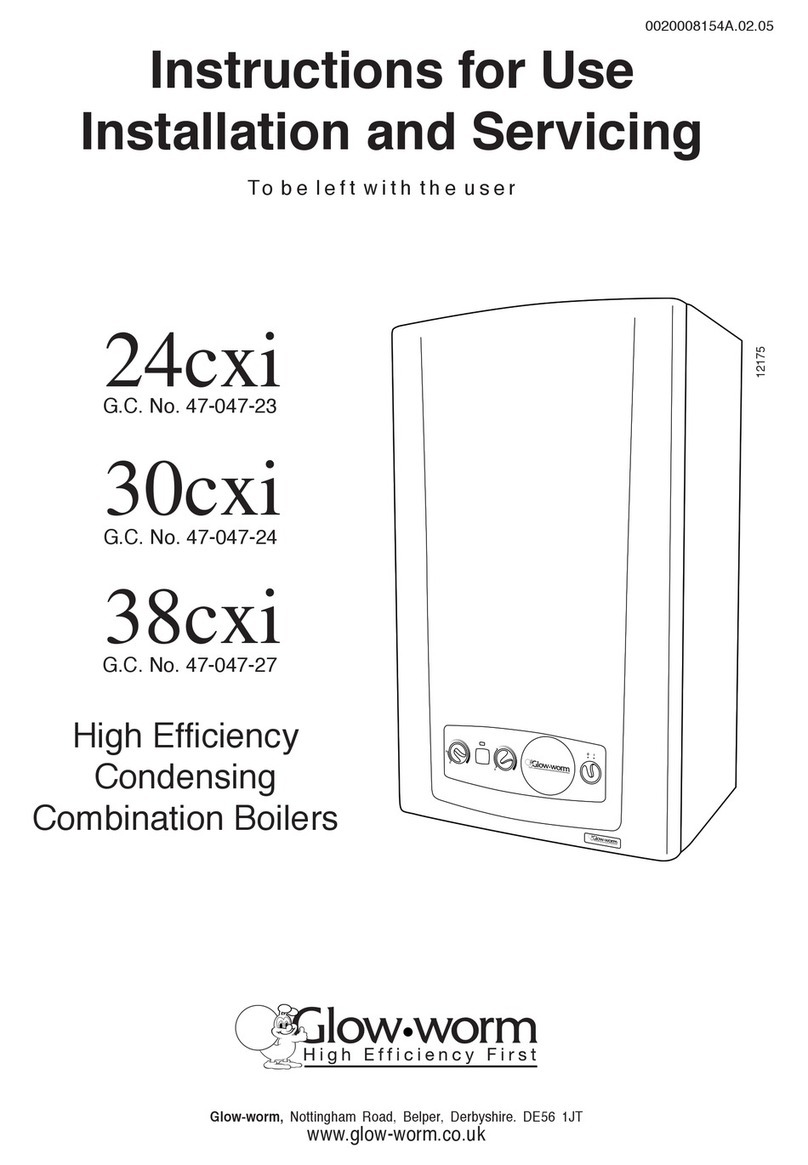
Glowworm
Glowworm Ultracom 24cxi Instructions for use installation and servicing
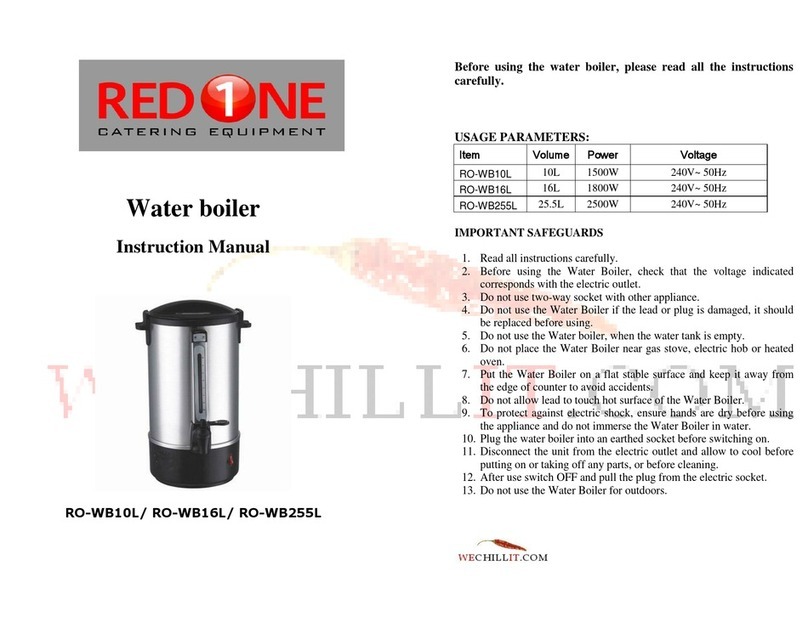
Red One
Red One RO-WB10L instruction manual

NeOvo
NeOvo EFU C 40 user manual
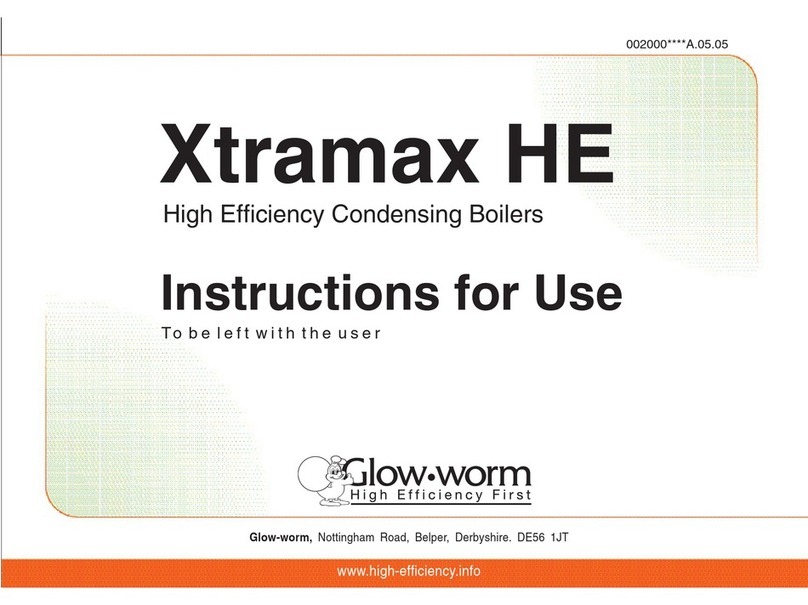
Glowworm
Glowworm Xtramax HE Instructions for use
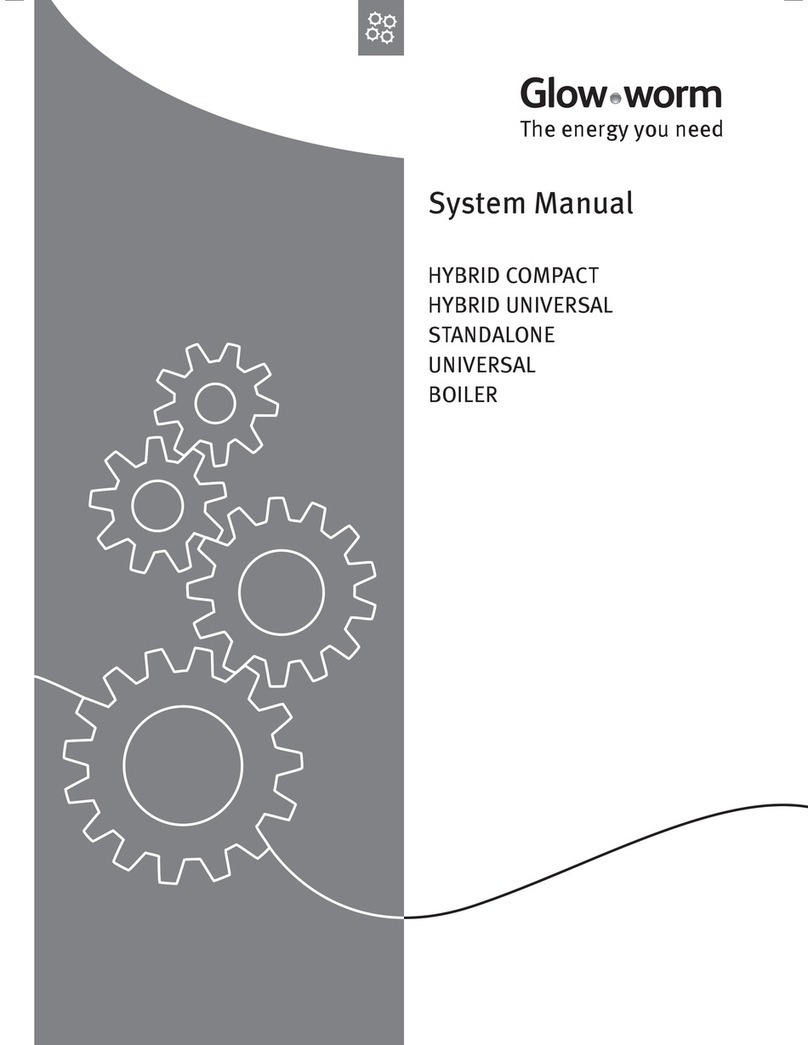
Glowworm
Glowworm HYBRID COMPACT System manual
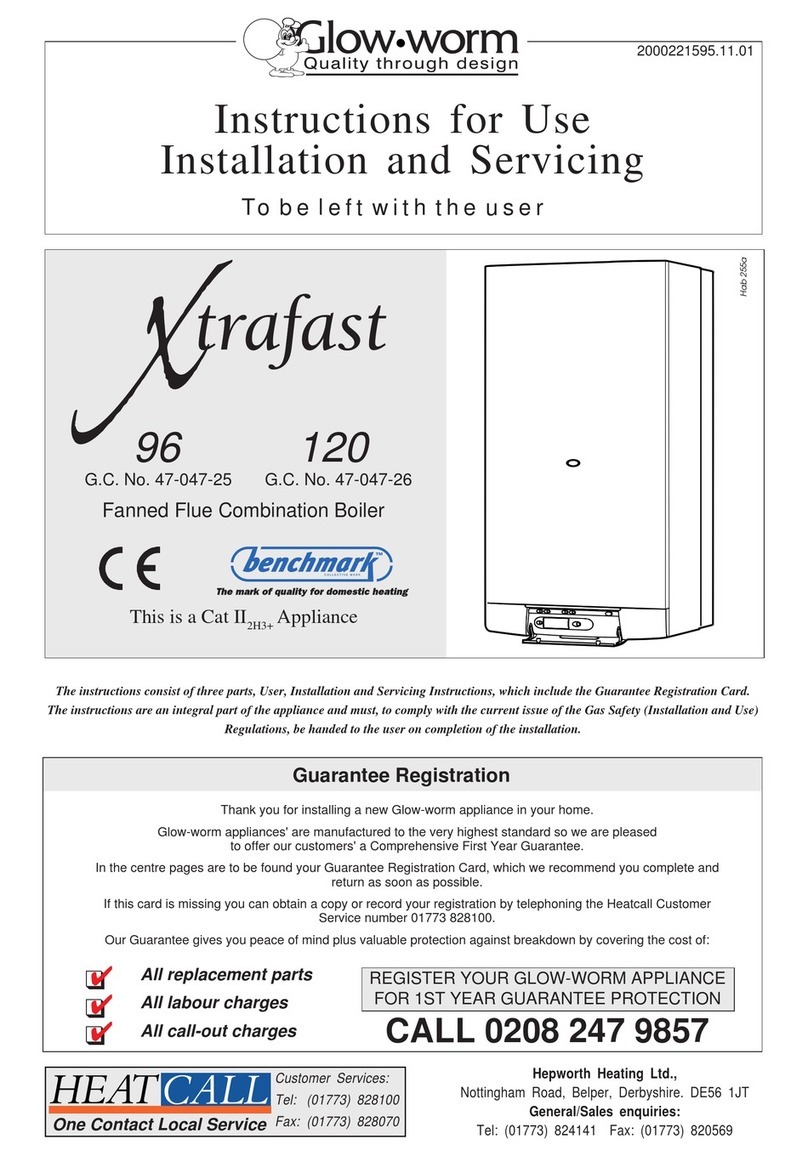
Glowworm
Glowworm Xtrafast 96 Instructions for use installation and servicing

E-Tech
E-Tech 9 Installation, operating and maintenance instructions

Heatline
Heatline SARGON 24 Installation, servicing & user instructions

